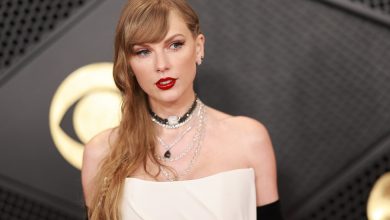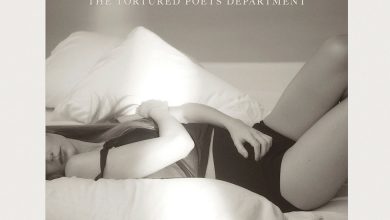How the War Changed a Kyiv Museum’s View of Its Past

KYIV, Ukraine — Most of the galleries are now empty at the Mystetskyi Arsenal, one of Europe’s largest art museums. As at almost every cultural institution in the Ukrainian capital, its curators and archivists brought down the displays when war broke out on Feb. 24. Much of the collection of about 4,500 objects has been moved to a secure location. Gallery after gallery sits in darkness. And yet: this summer, the Mystetskyi Arsenal is open to the public, with a forceful and beautiful exhibition that’s all the more impressive for its modesty and frank emotions.
“An Exhibition About Our Feelings,” inaugurated on June 10 at this leading contemporary art museum, is the first significant exhibition here to take the Russian invasion of Ukraine as its focus — though not in the way you might expect. It offers a view of life during the present war through works of Ukrainian art from the 1960s to the 2010s; nothing current has been commissioned or added to illustrate what its audience is living through today.
A painting of sunbathers by the Odesa painter Yurii Kovalenko calls forth, without any prompting, the land mines now beneath that city’s beaches — but it dates to 1989. A near-abstraction of shady gray strokes by Halina Neledva appears as a line of soldiers, or a queue of refugees; it was painted in 1991. This is an exhibition of injury and uncertainty, but also persistence, humor, and a dark hope for a country being reborn.
“This is a very unusual project for us,” explained Olha Melnyk, the head of the Arsenal’s museum division and this exhibition’s lead curator, when we walked through together recently. She and her team organized the show in only a month (rather than the two-year gestation common to museums of this size and caliber), as staff members who left Kyiv began returning in late April, after the Russian withdrawal.
“We are constantly in such a swing between light and dark, between hope and despair,” Melnyk said. “But institutions should show resilience, too, and support people, support the side of light.”
When the Mystetskyi Arsenal’s team reassembled here in April, they found themselves overwhelmed with emotions, and unable to give them form. It was far too early to analyze the war. So they decided to sublimate the chaos of the invasion, inscribing their new fears and hopes on pre-existing works by 17 artists. They saw their own vulnerability in a painting of a mother’s anguished childbirth from the early 1960s, by Yurii Solovii (1921-2007), who came to the United States as a refugee after World War II. They perceived a vision of national reconstruction in a more recent painting, by Oleh Kharchenko, of two nude carpenters lazing around a construction site.
They brought out several paintings by the Soviet dissident Oleksandr Dubovyk: jagged, discordantly organized compositions of sharpened knives, twisting bodies, and torn fragments of masterworks by Titian. Dubovyk is now 91 years old; he hunkered down in Kyiv during the first awful days of the war, and came for the exhibition’s opening.
“It is as if we are trying to predict our future,” Melnyk said as we stood in front of a watercolor by Maria Prymachenko that depicts two little monkeys and an open-jawed crocodile. “Our perceptions have changed, and we are able to see new meanings.” Before Feb. 24, Prymachenko was regarded as a benign, cheery folk artist. Since the invasion, and the destruction of a regional museum to which the artist donated dozens of paintings, that open-jawed crocodile looks a little more menacing.
Our Coverage of the Russia-Ukraine War
- On the Ground: After a summer of few conclusive battles, Ukraine and Russia are now facing a quandary over how to concentrate their forces, leaving commanders guessing about each other’s next moves.
- Nuclear Shelter: The Russian military is using а nuclear power station in southern Ukraine as a fortress, stymying Ukrainian forces and unnerving locals, faced with intensifying fighting and the threat of a radiation leak.
- Ukrainians Abroad: Italy already had the biggest Ukrainian community in Western Europe before the war, but Russia’s invasion put a spotlight on the diaspora and forged a stronger sense of national identity.
- Prison Camp Explosion: After a blast at a Russian detention camp killed at least 50 Ukrainian prisoners of war, Ukrainian officials said that they were building a case of a war crime committed by Russian forces.
“We also do not know,” Melnyk said, “if we will be able to escape this terrible beast.”
Wars and disasters can bring out an unfortunate cultural reflex in many audiences. In the first weeks of the war in Ukraine, Western news outlets pounced on images — usually posted by amateur artiststo social networks — of newly created “relevant” works (beautiful crying women, hands reaching for the sky, doves and flowers), as they did before Syria, Afghanistan and Iraq. To this desire for instant aestheticization, “An Exhibition About Our Feelings” forcefully says: not now, not us. It insists that art is not propaganda, and Ukrainians need something else from their museums, something profounder, than a restatement of what they already know.
This approach has been used in other shows engaged with traumatic episodes of national violence, notably “September 11,” at MoMA PS1 in New York, where most of the art predated 2001; and “We Are Living on a Star,” at the Henie-Onstad Kunstsenter outside Oslo, which put historical artworks in the shadow of the Norwegian terrorist attacks of 2011. There will be time to create later. Anyway, the past narrates the present all too well.
Indeed, the only new material in “An Exhibition About Our Feelings” is a sequence of video interviews with the Mystetskyi Arsenal’s staff members, who describe the chaotic experience of working in a wartime museum. The director, Olesia Ostrovska-Liuta, recounts the plans that her team made for protecting the collection in the case of a full-scale invasion, and the disbelief that they would ever need it. A security officer describes the fear and pride of staying in the museum during shelling. The head of its literary department tells of how she had to turn down foreign interview requests because sirens wouldn’t stop wailing.
The museum’s in-house videographer, Oleksandr Popenko, tells of surviving massacres in the city of Bucha, holding up a computer disk loaded with archival materials. “This hard drive contains everything I’ve filmed at the Arsenal since 2017,” he says. “I had to leave it in Bucha in the room where the projectile hit.”
The Mystetskyi Arsenal was founded in March 2005, in the aftermath of the Orange Revolution that brought President Viktor Yushchenko to power. The Yushchenko government established the Arsenal as a national arts complex, and gave its directors an explicit mission to put social issues and general education at the heart of its programming, which extends from art and theater to book fairs and concerts.
It’s housed — a dreadful irony, now — in a historic Russian weapons warehouse, built in the last years of the 18th century on the orders of Catherine the Great. Indeed, the arsenal is an architectural landmark of its own. This was the first major neoclassical building erected in Kyiv, with a straw-colored stone facade and vast galleries beneath grand, brick-lined ribbed vaults. The ring-shaped building is an awesome 60,000 square meters, though only about 12,000 square meters were in use before the war. (By comparison: the Palais de Tokyo in Paris, usually referred to as the largest art space in Europe, is 22,000 square meters, with 8,000 square meters of gallery space.)
Right now the exhibition is getting about 700 visitors a week: fewer than in peacetime, but more than the museum was expecting. Many visitors are internally displaced Ukrainians, who receive free admission. The security situation has required the Mystetskyi Arsenal to stay nimble, limiting the show’s footprint to just two galleries — though two galleries of this massive museum is nothing to sniff at — and privileging paintings and smaller sculptures that can be easily moved. (On the days before I visited, rocket attacks in the center of Kyiv forced the museum to close.)
Yet “An Exhibition About Our Feelings,” despite or even because of its scale and approach, asks the most fundamental questions that institutions in peaceful parts of the world have forgotten how to answer. What is art even for? Do extreme times prove art was always an expendable luxury — or might they reveal that art matters in ways peacetime did not show? Looking at this show’s tumultuous Kyiv street scenes, shellshocked portraits and unabashed nudes, I could glimpse a museum so much more confident than our own about why their work matters, one unafraid of putting it all on the line. Even the title of the show suggests an immediacy and openness about the place of art today, as if now, finally, we can say what is in our hearts.
The gallery adjacent to the “An Exhibition About Our Feelings” is left in the dark, as is the one after that, and the one after that. Leaving most of the museum empty was an economic and military exigency, but the curators have made the most of it by leaving a door open at the end.
“It illustrates our consciousness — the tunnel consciousness that we are living with today,” said Melnyk as she gazed into the dim rooms. “We survive one day at a time, and gradually, through these days, we move toward the future.”




